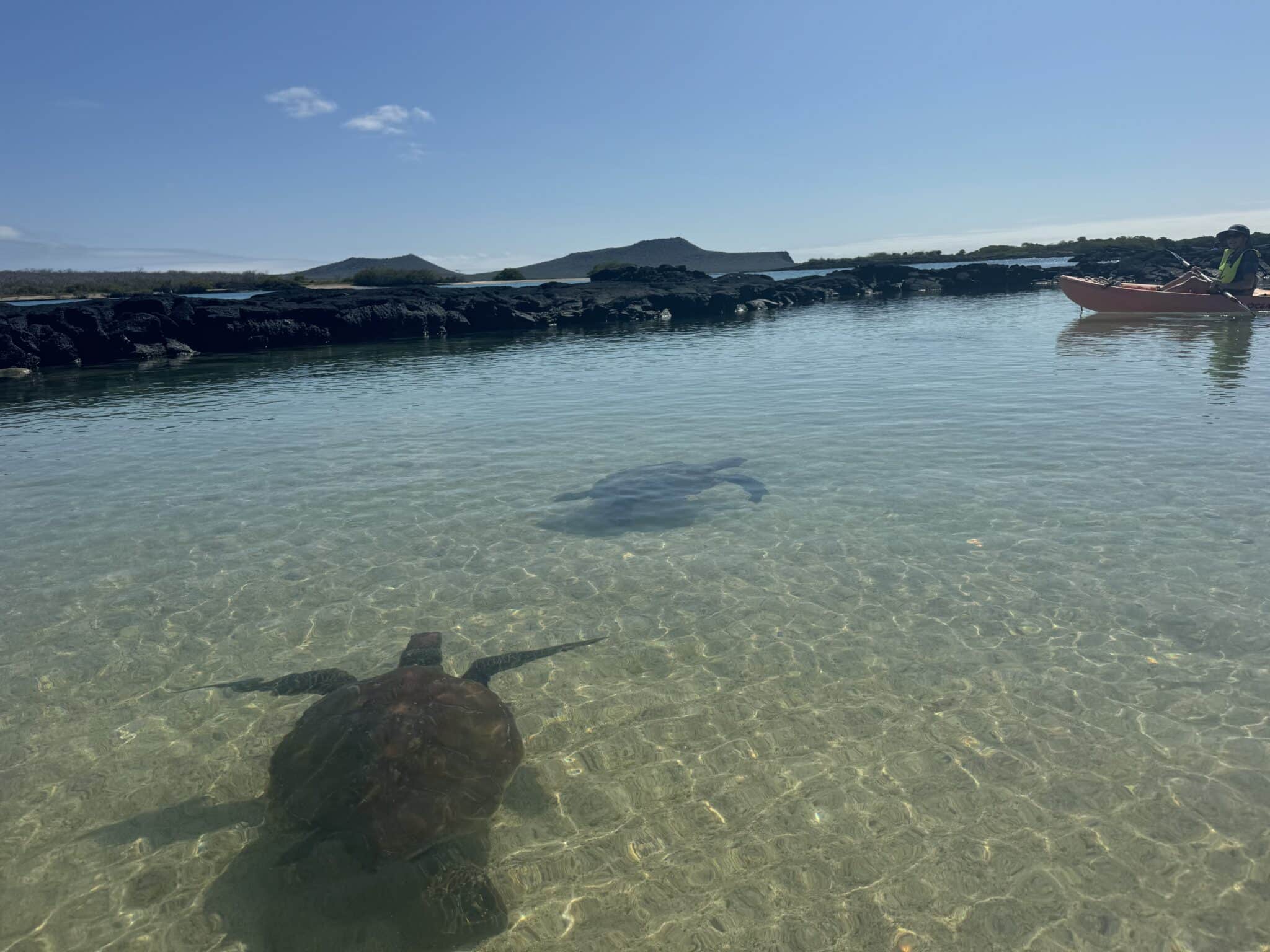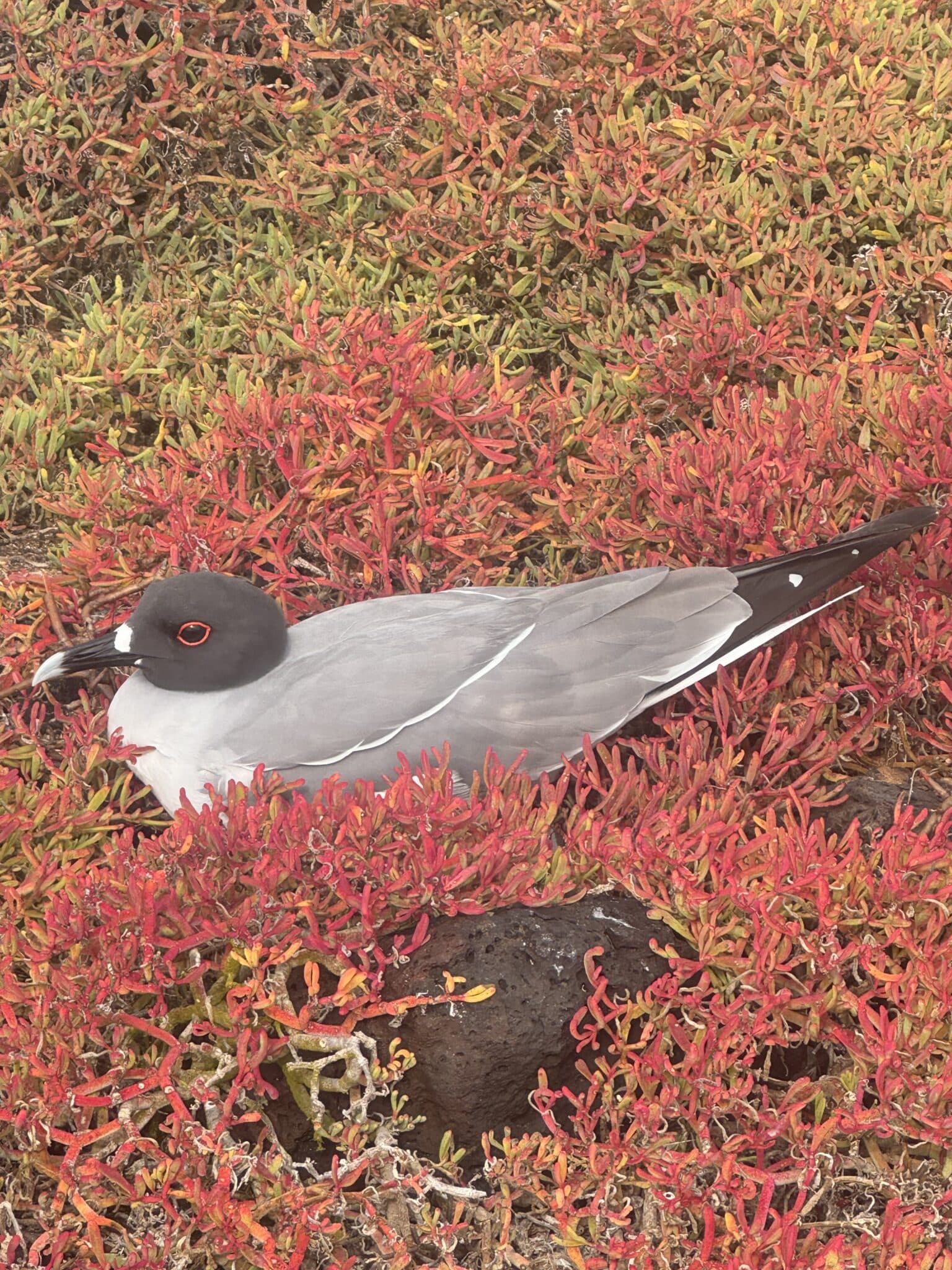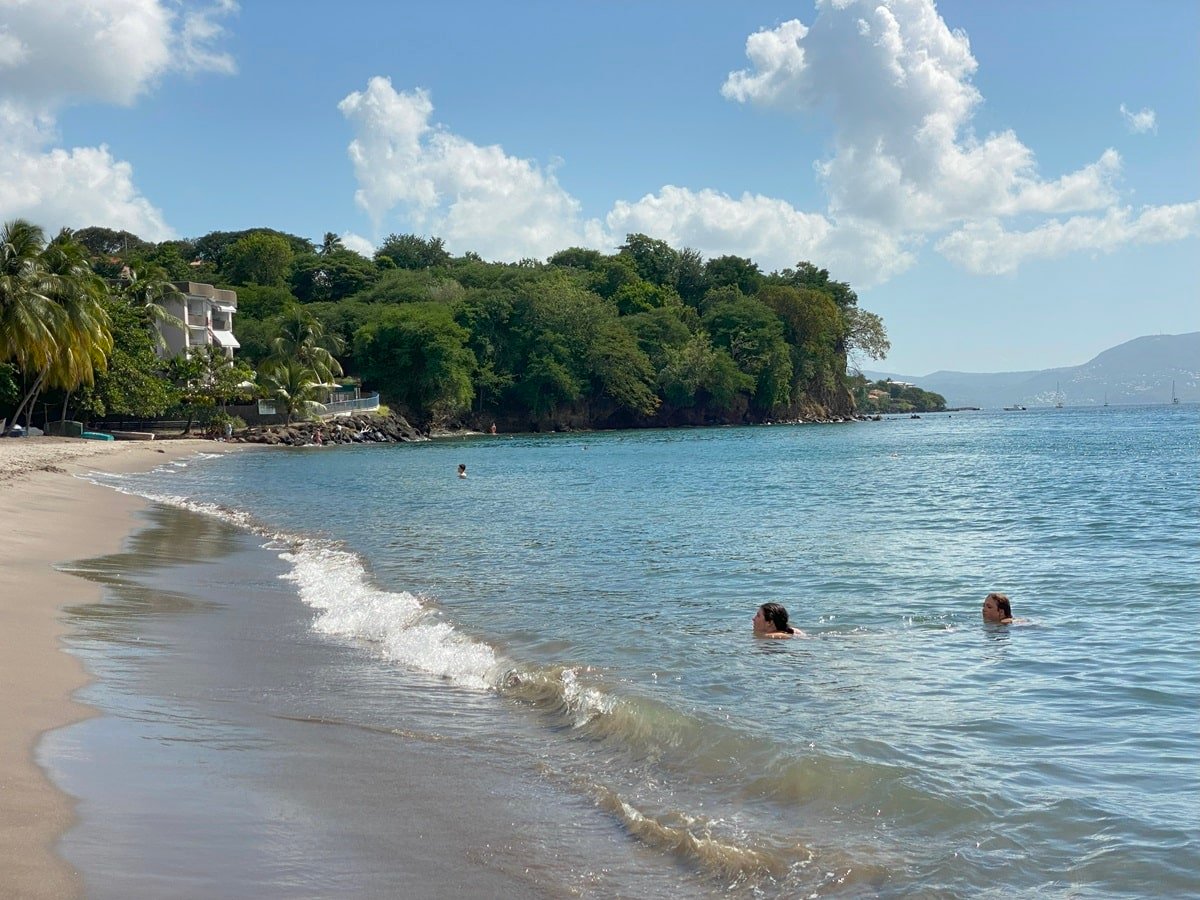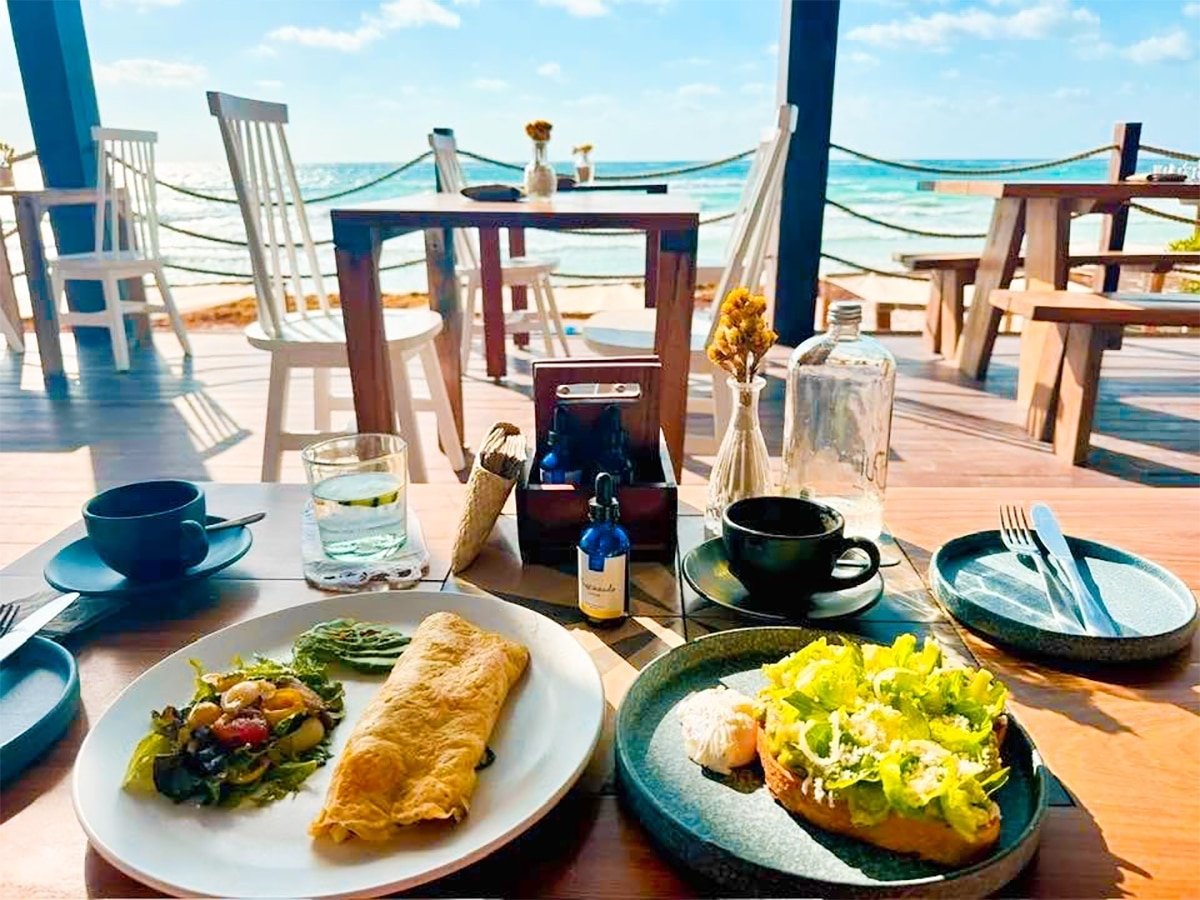A huge thank you to Ecoventura Galapagos for hosting me on this trip so I could write this detailed review of my experience.
There is something extremely special about coming off the open ocean to arrive at a new island where no one else lives but the wildlife, with endemic species found nowhere else in the world. Experience nature’s new adventures every day, when exploring the Galapagos Islands.

Six hundred miles off the coast of Ecuador, the Galapagos archipelago is a collection of 21 islands and 107 islets, formed by volcanic activity over millions of years. Named after their endemic giant land tortoises, the Galapagos Islands inspired Charles Darwin to develop his theory of evolution when, in 1835, he realized it was possible to tell which island a finch came from based on the shape of its beak. Darwin was moved by the natural wonders and animal adaptations, and recognized the impact of environment on natural selection. This diversity still exists today, with careful efforts to preserve the uniqueness of each island habitat.
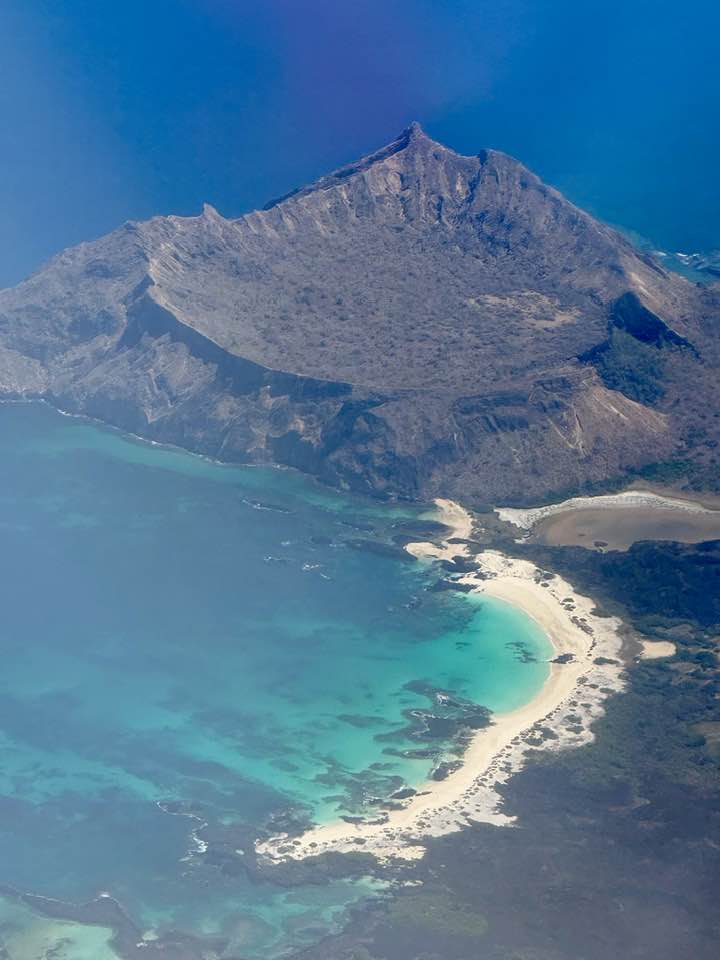
The islands are protected as part of Ecuador’s Galapagos National Park and Marine Reserve. Trained naturalist guides accompany guests (up to 16 per guide) within the park at all times, and enforce Galapagos National Park guidelines that keep everyone safe and ensure the protection and conservation of the endemic species. The goal is to keep the Galapagos flora and fauna as pristine and the wildlife as undisturbed as possible. The naturalist guides are highly trained residents of the islands and are enthusiastic about sharing their wealth of knowledge and detailed tips while observing animal behaviors in the wild. They help to foster an understanding of the surroundings and their knowledge enriches the experience.
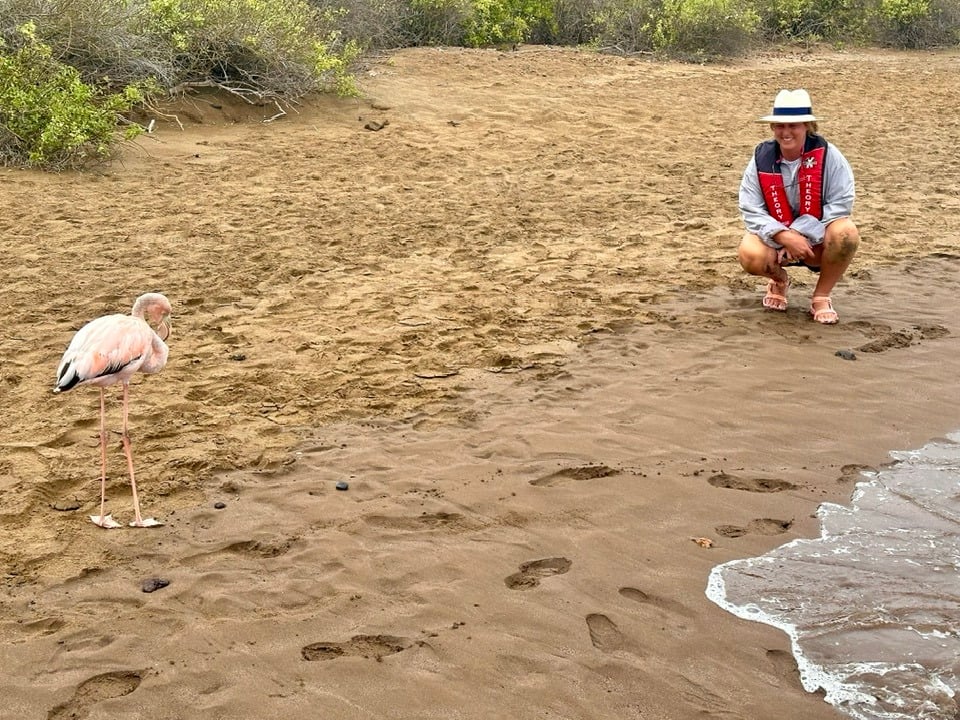
The best way to explore the Galapagos Islands is to “live aboard” a ship that efficiently repositions overnight at key destinations, maximizing the time spent in nature, hiking and snorkeling. Most voyages are exhilarating 7-night itineraries – following either a Southern & Central route of beaches and bays, or visiting the outer, rugged, remote islands of the Northern and Western boundaries of the archipelago.
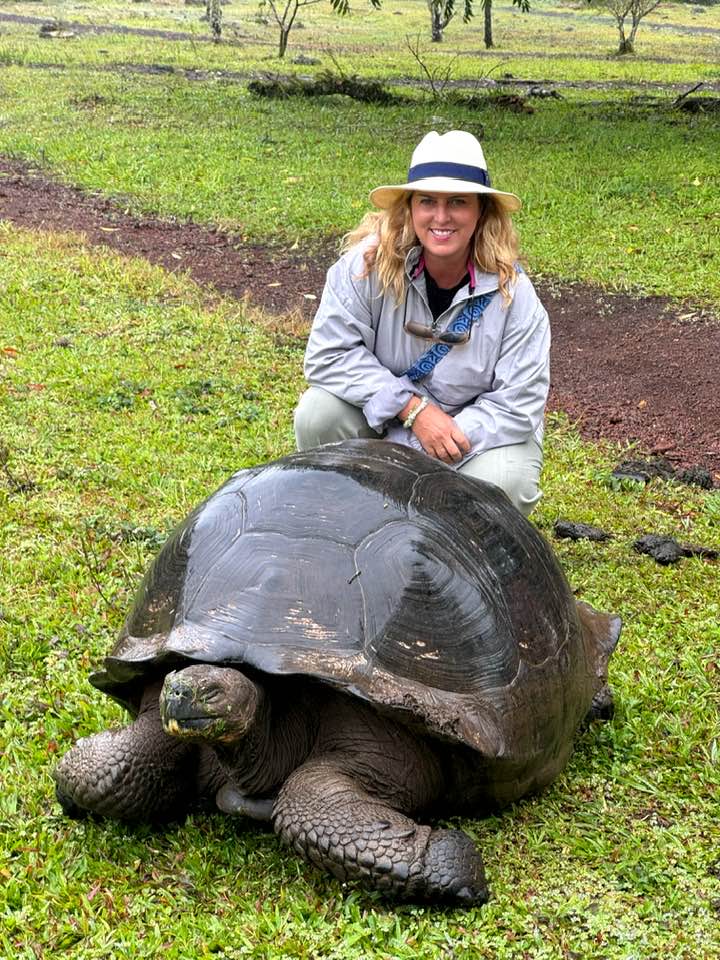
While cruise options span a variety of sizes (up to 100 passengers), budgets, and levels of comfort, a small luxury expedition yacht seems to be the sweet spot. These intimate voyages of 10-20 guests allow more time for wildlife exploration and an enhanced sense of privacy, often being the only small group of visitors on an island.
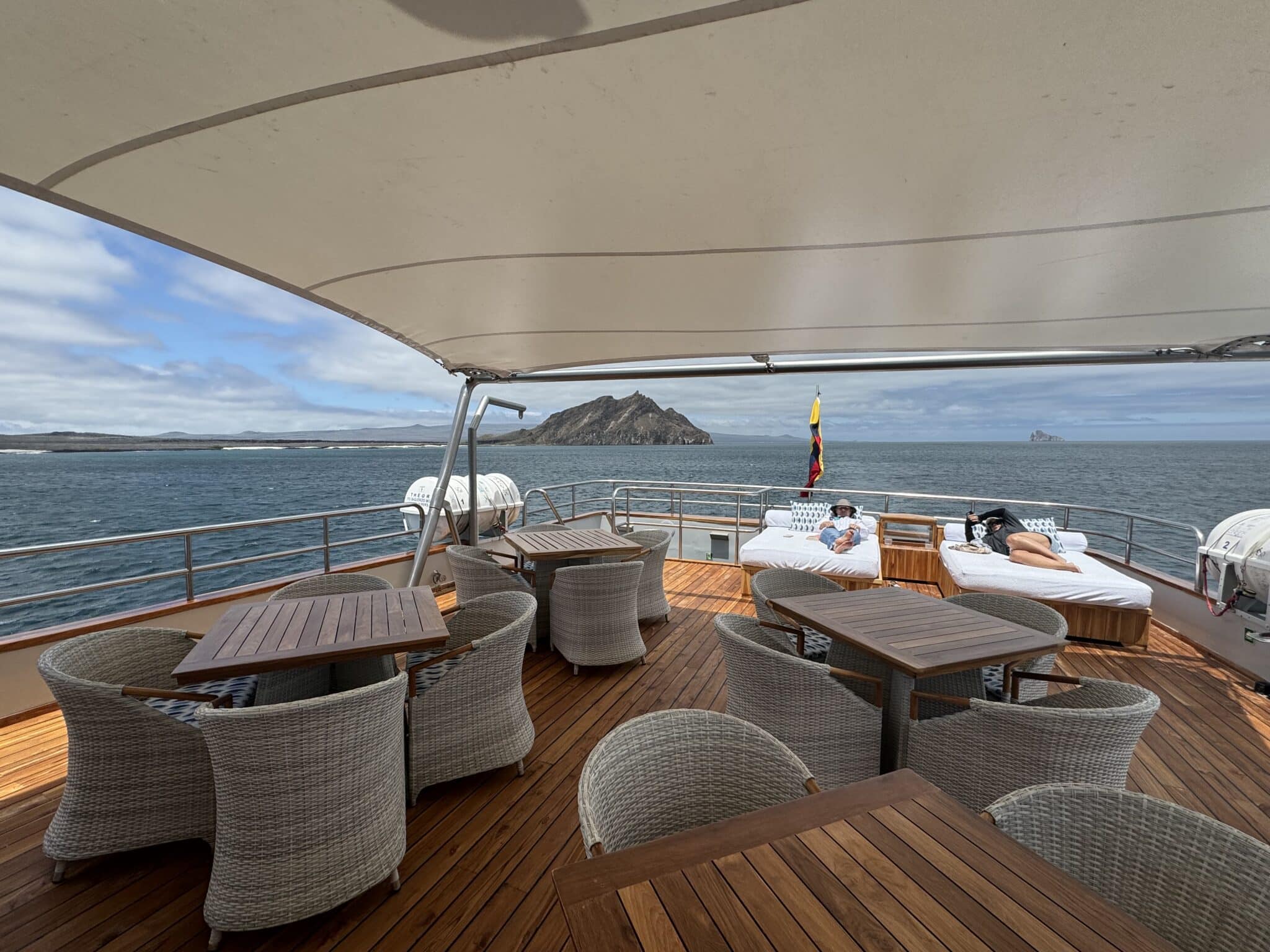
One of the oldest luxury live-aboard tour companies in Galapagos, Ecoventura offers expeditions with ten cabins (up to 20 guests), each staffed with a dozen friendly crew and two passionate naturalist guides. They redefined the concept of luxury expedition yachting in Galapagos, transforming it into a sustainable and chic experience with three floating five-star “boutique hotels” named the Origin, Theory, & Evolve. Their exceptional itineraries, exquisite gastronomy, outstanding service, and life-enriching experiences earned them inclusion in the prestigious Relais and Chateaux collection of hotels.

Exploring the Galapagos Islands is one of life’s most extraordinary adventures, made extra special when witnessing wildlife being docile, fearless and curious. Was this how it once was at the beginning of time? It’s certainly like no other place on earth.
15 wildlife adventures in the Galapagos Islands
Swim with Galapagos penguins
From the volcanic islet of Bartolome Island, east of Santiago Island, snorkel around the rocks to witness the tiny Galapagos penguins preening and resting on the shoreline. In a quick glance, one penguin may look at you and shoot past in the water like a torpedo. Several others may follow suit and whizz by too. Later, in your zodiac, watch the penguins perform their mating rituals on the rocks.
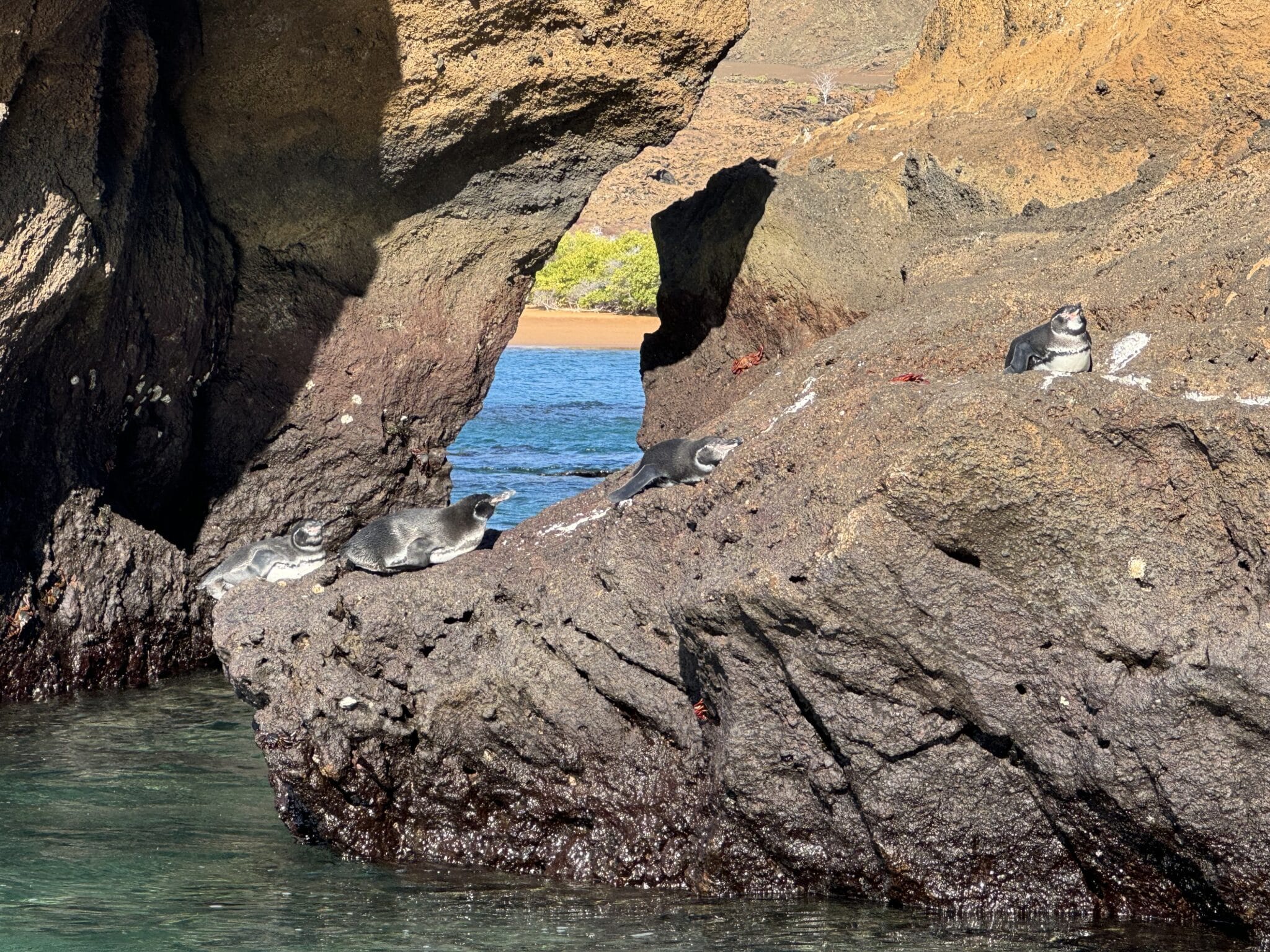
There are approximately 1000 penguins in the Galapagos and typically at least 8-10 on shore at any one time in Bartolome.
Roam with giant land tortoises
In the tropical Highlands of Santa Cruz Island, witness hundreds of giant land tortoises – resting, moving slowly, or hanging out in a muddy water area in this lush part of the island. They walk up to 300 yards per hour and love to eat guava. It’s thought that tortoises arrived from Chile some 2.8 million years ago and evolved and grew due to lack of predators. Scientists think some can live more than 150 years old but are not certain, as the creatures have only been studied for about 80 years. Since they have no natural predators and food is widely available, some tortoises can grow to exceed 500 pounds. Fifteen species have evolved here and three species have already been lost.
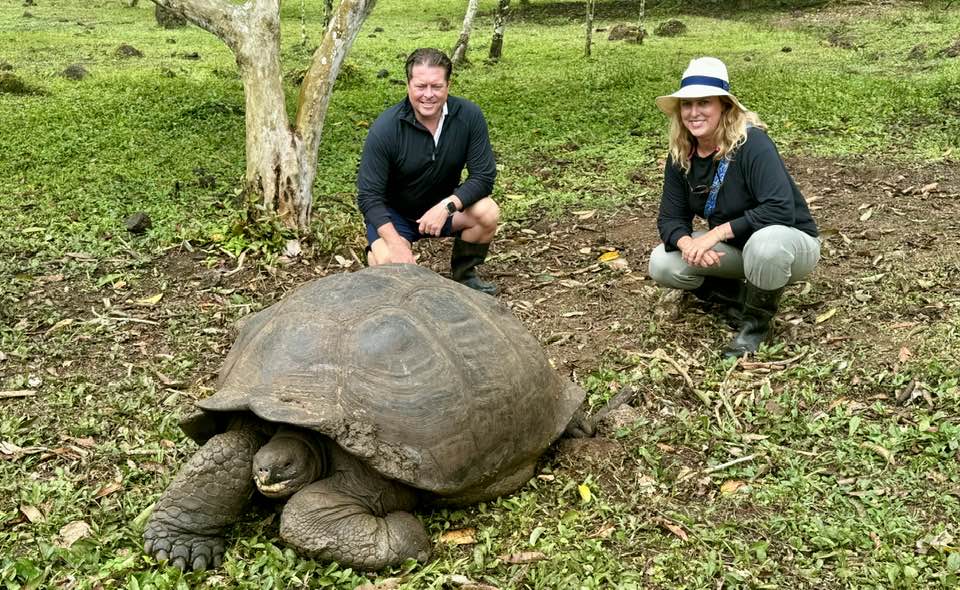
At the privately-owned El Chato Ranch, where tortoises roam in a pristine natural habitat, you can also plant a scalesia tree, sip Galapagos-grown coffee, and explore a lava tube tunnel underground. Learn how the tortoises make their pilgrimage to the top of the island for food and water, only to move down the hill in the hot rainy season and lay their eggs to incubate for 5 months in warmer conditions. Higher or lower temperatures determine the sex of the tortoise.
Nearby, at the Charles Darwin Research Station, witness ongoing conservation efforts and a tortoise breeding center, where a sample of eggs from all the islands are incubated to help to ensure survival, as only 40-50% of eggs typically hatch in the wild under the right temperature conditions. Nearby, pay homage to a taxidermized Lonesome George, the last surviving tortoise from Pinta Island; and witness the live saddleback tortoises, whose species was reduced to a mere 14 tortoises until the San Diego Zoo played a crucial role in its recovery
Get up close to green sea turtles
Galapagos green sea turtles are the only turtle species that nest here and they are prevalent wherever you go – gliding by your window, sliding onto a sandy beach to rest, and floating around while snorkeling and kayaking. It is always joyful to witness these majestic creatures in all sizes.
Cruise around sea lions on land and sea
Sea lions feel like squirrels in the Galapagos, as there are over 24,000 sea lions around the islands. That requires 70,000 kilos or 77 tons of fish per day to feed just the sea lions. And in a testament to nature, the ocean provides. Sea lions seem to dot every shoreline. You can hear their groaning and barking from a distance. The dominant males of a sea lion colony keep watch over the harems and keep them safe.
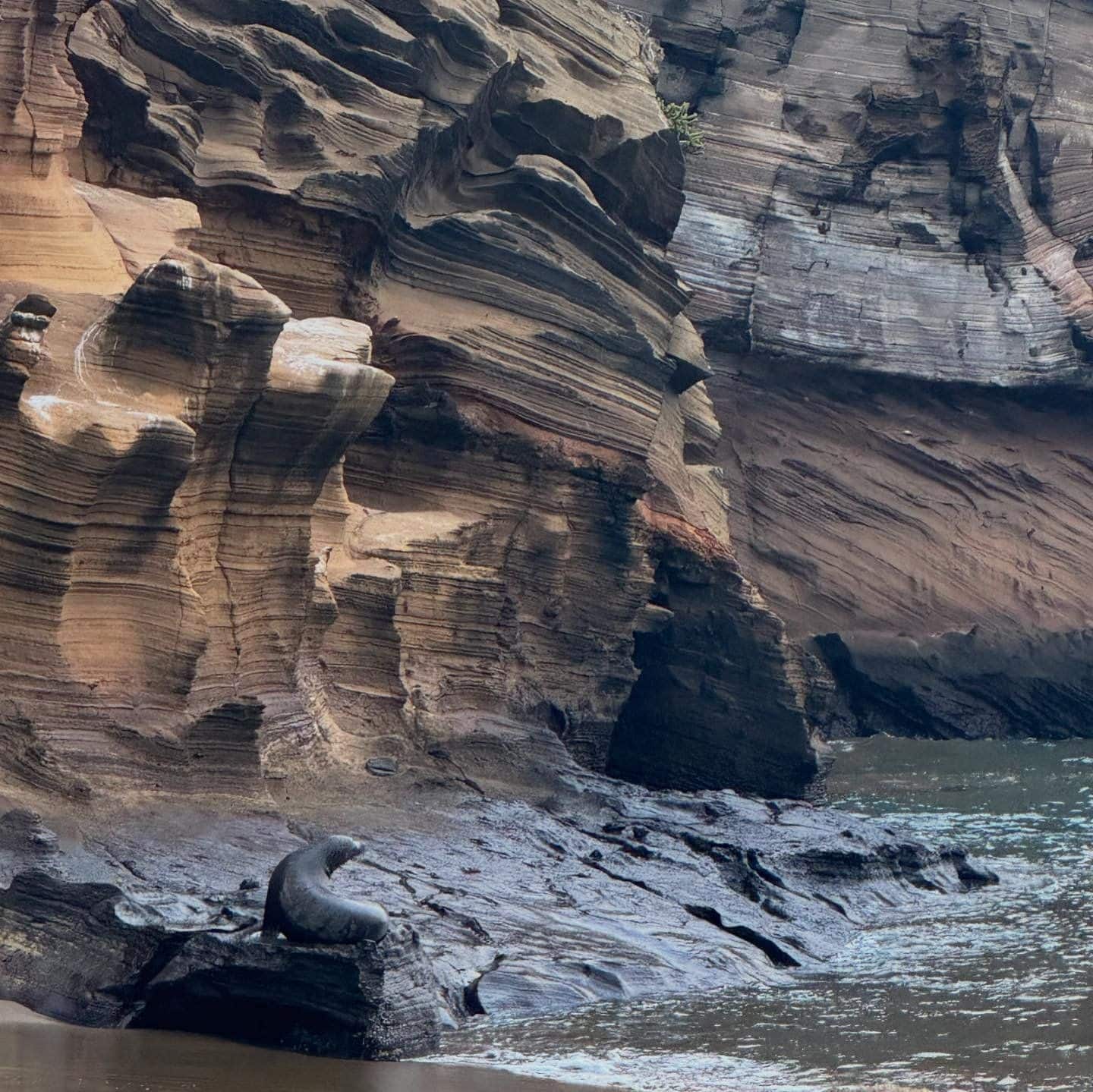
As you snorkel, witness their playful grandeur as they glide quickly through the water or play with a puffer fish like a toy. The juveniles are curious and won’t hesitate to approach you but mean no harm.
Observe boobies tending to their young
Prepare to see boobies on almost every island. Genovesa, Floreana, and Española Islands are the only places in the world to find rare Nazca boobies; Genovesa Island also houses the world’s largest red-footed boobie colonies; and North Seymore Island is the top destination for blue-footed boobies. When rounding Kicker Rock, observe all different types of boobies stopping at the rocky cathedral. The entire San Cristobal Island feels like bird paradise, where you can get up close and personal with the wildlife.
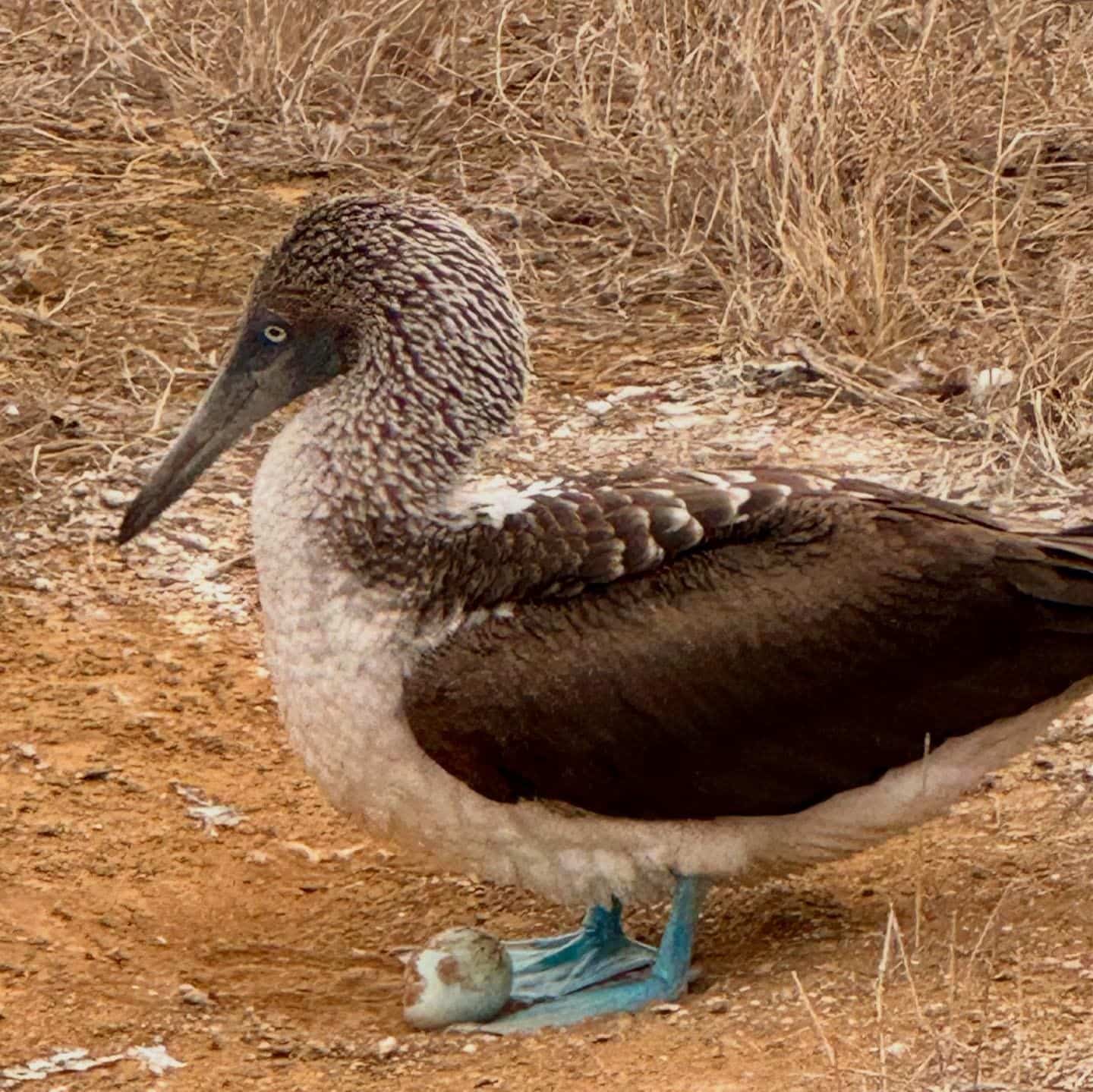
The boobie babies are white and fluffy until their feathers grow in and also begin their lives with white feet. Blue footed boobies sit on an egg on the ground, while red foot boobies make nests, but both will allow you to get extraordinarily close to observe them in their habitat.
Witness frigates steal their meal
North Seymour Island is a tiny island that sits above Santa Cruz Island and is filled with birds. It feels like a bird safari of sorts, especially when the frigates puff out their red ballon chests to attract a mate. The Galapagos is home to two different frigate species, Great and Magnificent. They cannot fish themselves, so they often harass other birds – stealing fish, eating eggs, and shaking baby boobies for regurgitated fish oil.
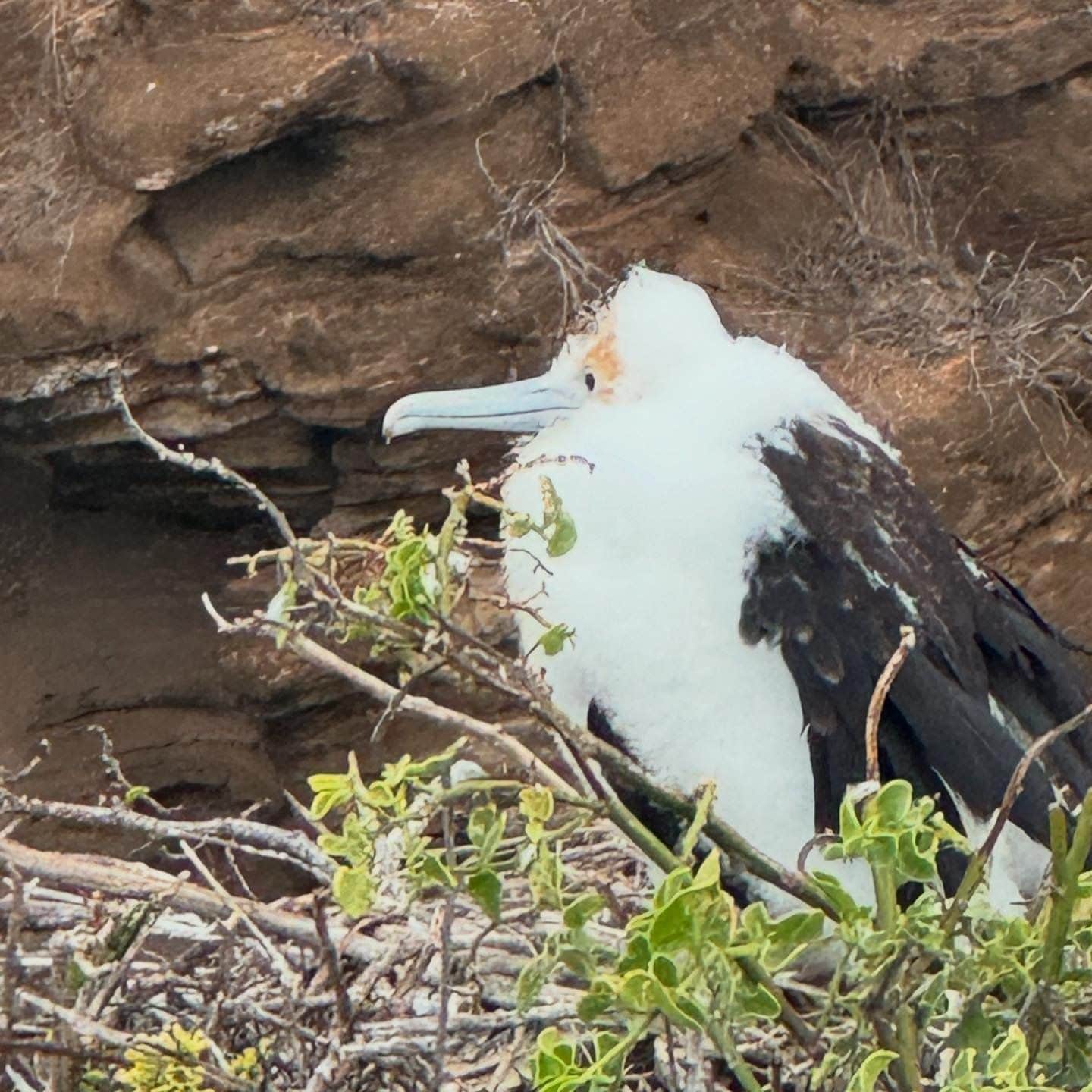
Frigate babies have an unusual beak pale blue in color and, with its cartoonish features, makes it one of the coolest birds you’ll ever see.
Marvel at the waved albatross perform mating rituals
Espanola Island is considered the oldest island still in the chain (3.5 million years old) and is home to “albatross airport”, a blufftop launch point for hundreds of albatrosses, with their incredible wing spans. They line up like on an airport runway to catapult themselves off the cliffs and glide for hours by riding ocean winds. You wouldn’t expect to see so many up close, as they spend their first several years of their lives on the open ocean, but they eventually return to land to mate and raise their young. Between April and December, albatrosses perform their courtship dance as they click their yellow beaks together in harmony.

Admire the swallow-tailed gull, the only nocturnal gull
This endemic species has adapted to the environment by developing red-lined eyes that help it fish and helps their babies to recognize them. These friendly nocturnal birds with red feet and red-rimmed eyes catch fish and squid at night, often far offshore. They lay one egg per year.
Frolic with flamingos
A lagoon of these bright pink and black American flamingos on Floreana Island makes for an enchanting oasis for drinking, resting, and flying through the air. Sometimes juveniles leave the lagoon and strut down the sandy path, like beauty pageant queens, to stroll the beach. On the north end of Santa Cruz Island, these vibrant pink feathered beauties can be found standing on one leg, asleep. There are a few hundred flamingos that make their home in the Galapagos.
Observe the behaviors of land and marine iguanas
It might feel like man versus marine iguana here, as some islands are covered with these prehistoric looking creatures only found in the Galapagos. They feast on rocky sea moss and after a swim, often rest or sunbathe on the dark lava rocks, almost camouflaged. Marine iguanas are usually black but acquire bright red and green coloration during mating season from the algae they eat. You can hear them spray snot as they try to get rid of excess salt.
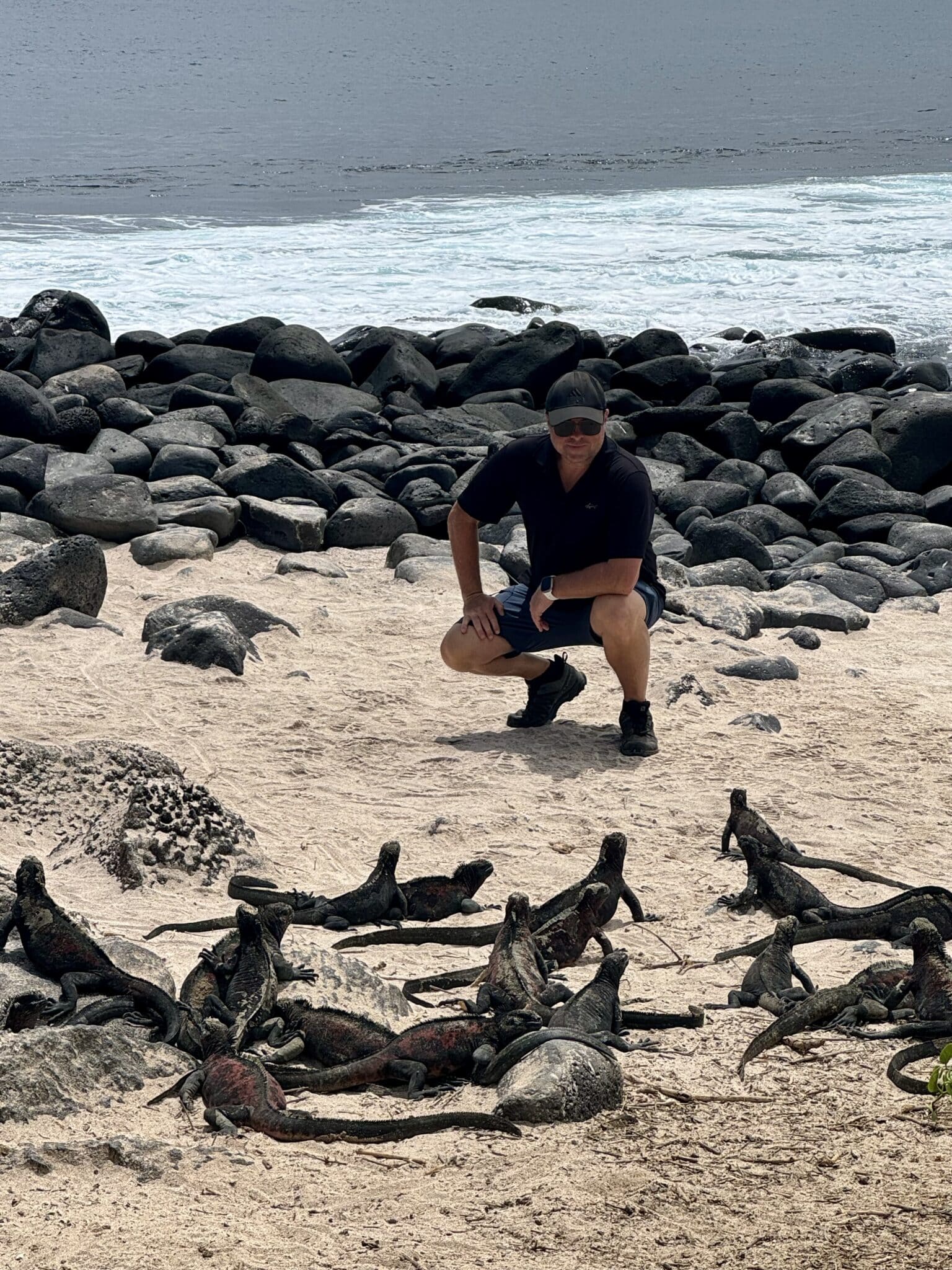
Yellow land iguanas feast on cacti, and on North Seymour Island, you can watch as they devour prickly pear cactus and even hang off the cacti for an elevated view. When food is scarce, land iguanas can survive by shrinking their bodies by a third due to extracting calcium out of their bones. They have learned to adapt to a harsh climate and coexist with the lava lizard and numerous birds on this island.
Swim with the sharks and be amazed by the rays
Almost 30 species of sharks roam the Islands, including scalloped hammerheads, whale sharks, horn sharks, whitetip and blacktip reef sharks, tiger sharks, Port Jackson sharks, and Galapagos sharks. While there is a great deal of wildlife to observe, you will never forget kayaking over reef tip sharks in a shallow lagoon or observing a Galapagos shark swim under you while you snorkel.
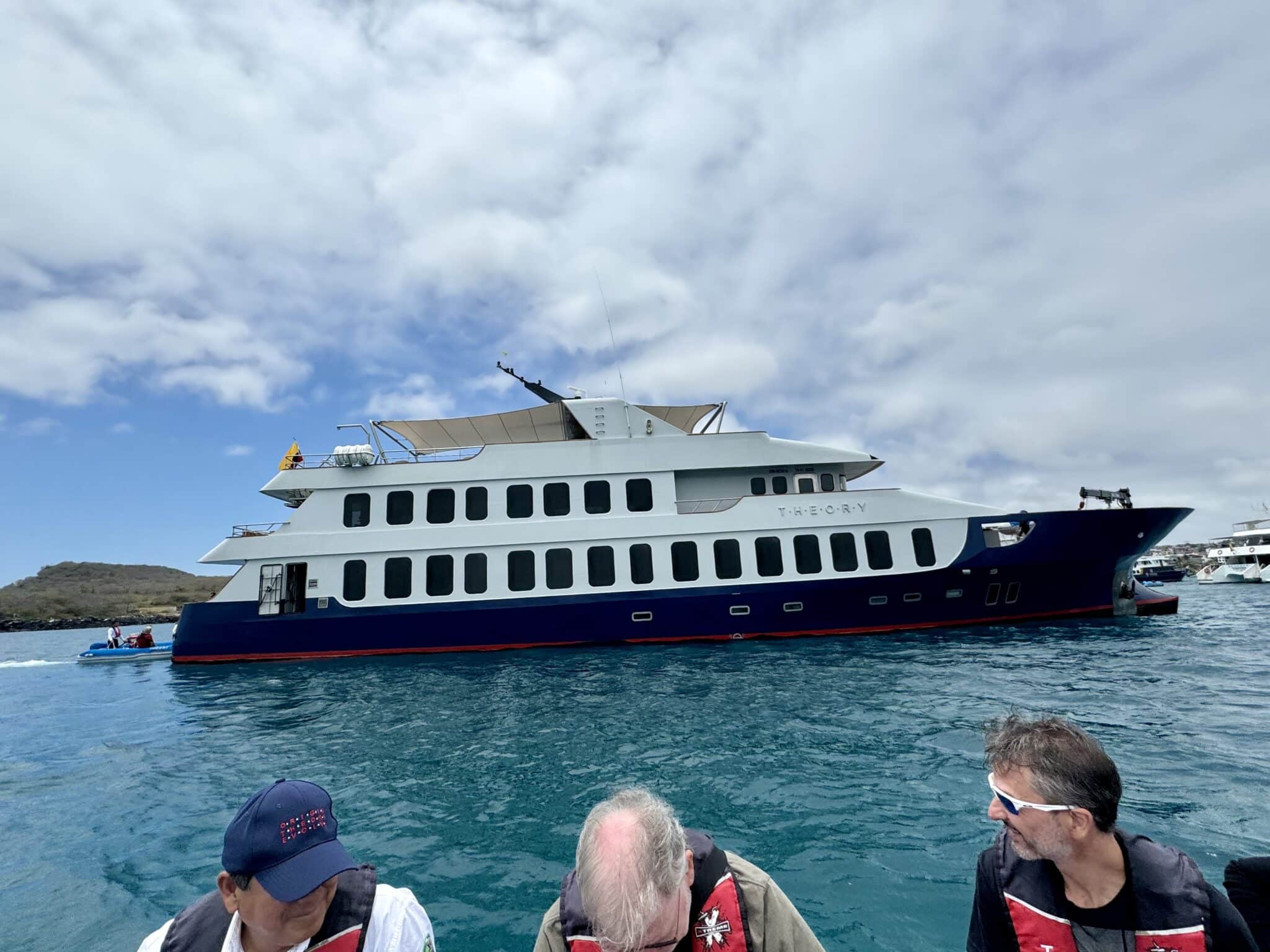
Sea rays can be found everywhere in Galapagos and these gentle giants are a special sight when snorkeling. Manta rays are the largest in the Islands, spanning up to 13-ft across and weighing in at over 6,000 lbs. Golden rays are only a few feet wide and enjoy quiet lagoons. In between are spotted eagle rays, with their distinctive splattering of white spots that paint their black tops.
Snorkel with schools of colorful fish
While the warm water of the hot season is more comfortable, cooler July and August are the best times to dive and snorkel, as sea life comes closer to the top when water temperatures chill and invite the growth of more plankton. It is also whale season and they make their appearance with misty blows and tail displays.
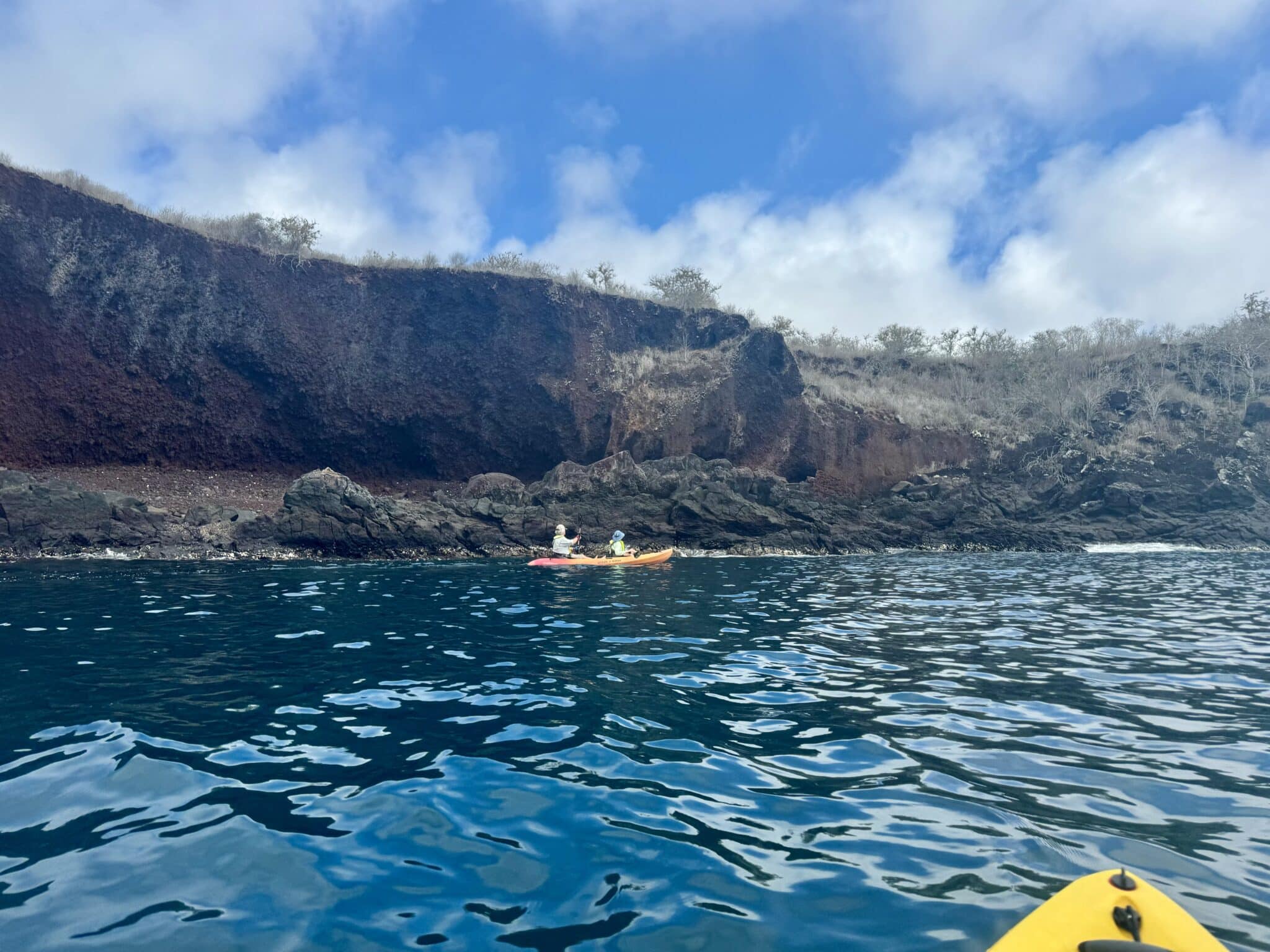
Even though there are no coral reefs in the Islands, 60-70 kilos of sand are pooped out after parrotfish eat coral. Each dive brings an unexpected delight, with species like giant sea stars, Parrot fish in magnificent colors, puffer fish in bright yellow, teal, and black with white polka dots, and teems of Yellowtail Surgeonfish. Concentric pufferfish can be spotted near most shorelines.
Endemic to the islands, the red-lipped batfish (Galapagos batfish) is a strange looking deep-sea carnivore has the appearance of wearing bright red lipstick; and the mola mola (ocean sunfish) is the world’s largest bony fish (adults are 10-14 ft), with an oddly-shaped body that makes it resemble a giant swimming head.
Discover animal defense mechanisms
On Floreana Island’s creamy white sand beach, you might witness in amazement, as an eel backs itself into the sand then pops its head out like it might be hunting for insects, or crawling out and knotting itself into several knotted balls to help roll itself back into the sea.

Snorkeling, you might be lucky enough to observe an octopus change color to blend in or squirt ink and create a diversion to flee. While land-based animals are largely free of predators, ocean creatures have a more competitive ecosystem to navigate.
See Sally Lightfoot crabs scurry over rocks
Rumored to be named after a Caribbean dancer, these Galapagos crabs cling to the black volcanic rocks and scurry fast. The babies blend with their black color eventually turning bright red once fully grown with yellow and blue accents. Red is seen as dangerous to predators which is why oyster catchers and sea lions probably don’t go after them.
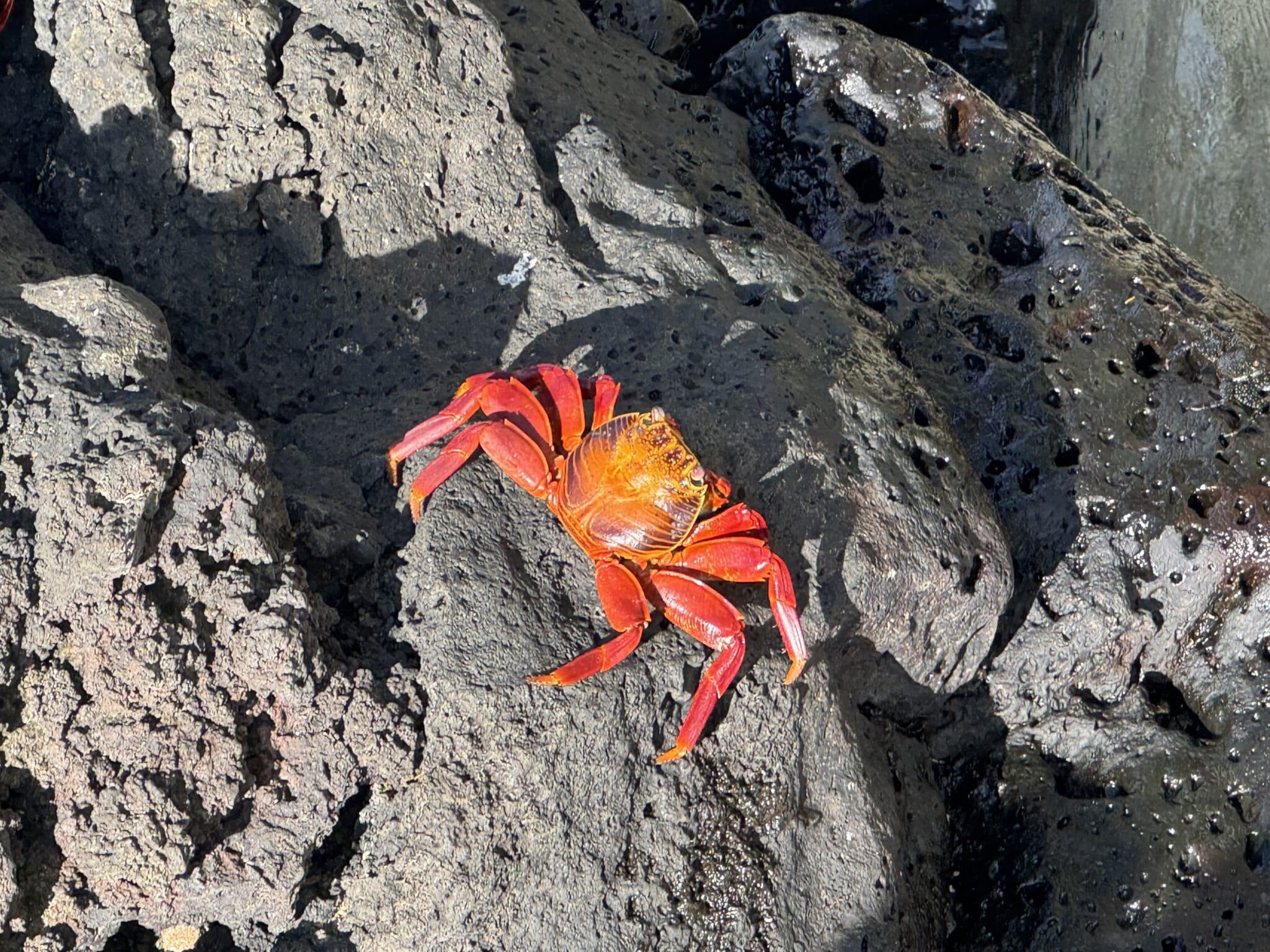
Other occupants of the intertidal zone include Galapagos hermit crabs, ghost crabs, and mollusks – snails, shells, starfish, sponges, sea urchins, sea cucumbers, and sea anemones.
Watch the whales and dolphins play
The unique currents of the Galapagos attract sperm whales, dolphins, and orcas throughout the year. Humpbacks, seis, minkes, and blue whales visit seasonally from the north when the waters cool. Any whale sighting is special, but the spectacular natural backdrop of Galapagos makes it that much more so.
KEEP READING
–How to make sure the TSA Precheck checkmark is on your boarding pass
–Did you know your electronic devices should always be charged when going through security?
–10 airport security hacks every traveler needs to know
–Mom shares hilarious reason she’s not getting TSA Precheck anytime soon
–How to get a full bottle of water through airport security
Want more travel news, tips and deals? Sign up to Johnny Jet’s free newsletter and check out these popular posts: The Travel Gadget Flight Attendants Never Leave Home Without and 12 Ways to Save Money on Baggage Fees. Follow Johnny Jet on MSN, Facebook, Instagram, Pinterest, and YouTube for all of my travel posts.

